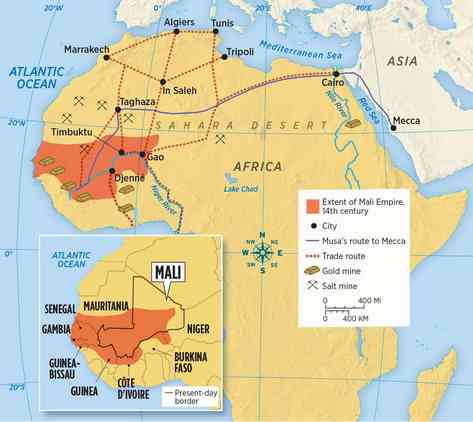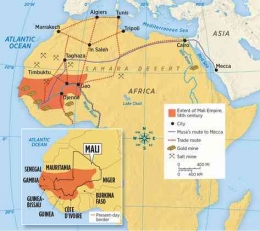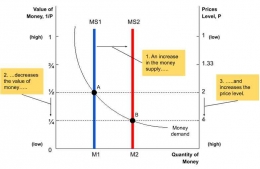Mansa Musa gave so much gold for free, took it back as loan, and returned it.
According to The Medieval Empire of Ghana (1957), Mansa Musa carried out a grand pilgrimage or in Islam "Hajj" to Mecca in 1324. As one of the wealthiest kings at the time, his royal journey was accompanied with a grandiose convoy which consisted of more than 60,000 people, animals, and gold. Five hundred slaves lead the caravan with each holding a golden staff weighing 500 mithkal (an islamic unit of weight equivalent to 4.25 gram). Along the journey, Mansa Musa gave 20,000 ounce gold for free-- as if it's a small fraction of his wealth-- to the people in Mecca, Cairo, and Medina. The overly generous gifts and trading caused inflation. Goodwin (1957) said, "..price rocketed as everyone tried to pay in depreciated gold." Gonnay (2019) also said there was so much gold, it devalued the price of gold for over a decade.
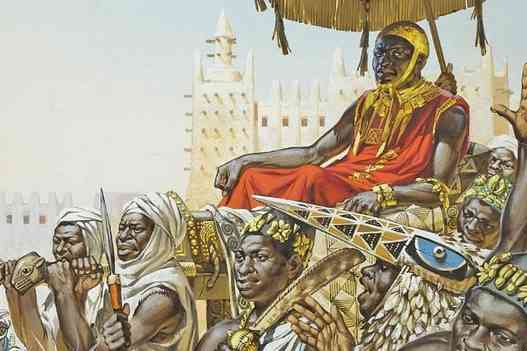
Knowing the situation, Mansa Musa tried to fix the inflated economy by borrowing back the gold he had given (Harris, 2020; Goodwin, 1957). The people of Cairo who act as the gold lender were overjoyed and used the opportunity to charge a high interest. As a result, the value of gold rose to unprecedented heights and prices fell accordingly. Some time later, Mansa Musa paid back all the gold borrowings plus the interest in one big payment which caused the price of gold to fall again. In one pilgrimage trip, Mansa Musa had ruined, repaired, and once again ruined the world price of gold. The effect was not only felt in the three cities, but spreads across Africa, Middle East, and Europe.
3. Discussion
The case of Mansa Musa can be explained by monetary theories:
1) Monetarist Theory of Inflation
In this discussion, we analyzed well-known literature related to the phenomenal act of giving massive 20,000 ounces of gold -- 1,250 pounds -- each at Cairo, Mecca, and Medina by Mansa Musa. Referring to Milton Friedman's Theory of Inflation (1956), we can see that from the actions of Mansa Musa, inflation is purely a monetary phenomenon that can only be produced by expanding the money supply at a faster rate than the growth of capacity output. The correlation is illustrated in the graph below.
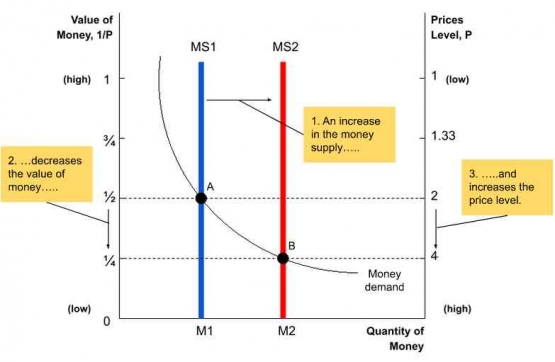
Figure 3 shows that there is a strong correlation between the existing money supply and inflation. The horizontal axis represents the money supply, the vertical axis represents the value of money 1/p, and the right vertical axis represents the price level. When the value of money is high, the price level is low and vice versa. The two curves describe the demand for money and the money supply. The supply curve is vertical because it describes the amount of money in circulation and the price level that can be determined.
In this analysis, the massive distribution of Mansa Musa's gold is described as an increase in the money supply. This is because gold became the currency at that time. Therefore the topic of this discussion describes gold as the amount of money in circulation. It can be seen from the graph that equilibrium A represents the status of one of these countries, namely Egypt (Cairo), as one of the influential countries before Mansa Musa distributed large amounts of gold during the pilgrimage to Mecca. Equilibrium A describes the balance between the supply and demand for money between the value of money and the price level of goods at that time. If the change in the money supply at equilibrium B is represented as a multiplier effect after Mansa Musa's large gold distribution, it changes MS1 to MS2. As a result, the value of money fell from 12 to and the price level rose from 2 to 4.




